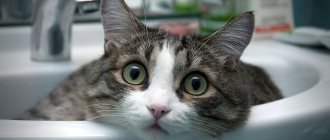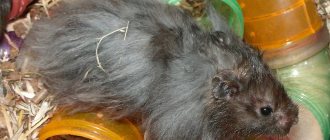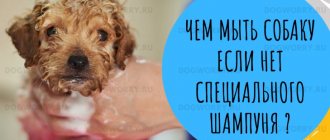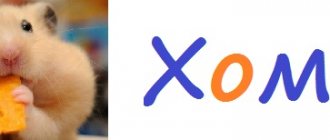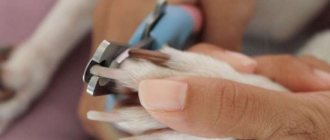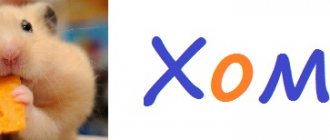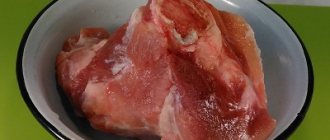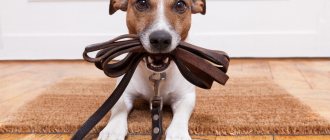One of the main components of dog care is hygiene. The pet must be clean, regardless of size and breed. Bathing a dog is a necessary procedure. But not all owners know how often to wash a dog and how to do it correctly. Many owners of four-legged animals still disagree about the frequency and regularity of hygiene procedures, as well as the need to use special means for this.
Why do you need to bathe periodically?
Dog owners know that their pet must be kept clean. This is not only a guarantee of health, but also comfort for a person, because everyone does not like the unpleasant smell of “dog”. It is advisable to bathe your dog after a long walk, as the coat quickly collects dust and dirt. The frequency of washing may depend on the breed, activity of the dog, and participation in exhibition events.
You can pre-select the show that best suits you from the 2022 CAC Dog Show Schedule.
The frequency of bathing is once or twice a month. You should not wash your dog frequently, as this removes the fatty lubricant that protects the skin from dryness and cracks. After daily walks, it is enough to wash the paws and wipe the coat with clean warm water to remove minor dirt.
Bathing helps keep your pet clean, gets rid of unpleasant odors, helps the dog with hygiene, and also maintains health, and prevents possible skin diseases, parasites, and lice.
Some dog breeds do not require frequent bathing. This procedure can wash away the natural oil that accumulates on the skin. It is a protective barrier.
Dangerous! Disruption of the sebaceous glands leads to serious diseases and negatively affects the mood and well-being of the pet.
Important points
Dogs are fairly clean animals, and in most cases they could do without taking baths.
They do not sweat, they lick themselves, getting rid of dirt and dead hairs. Representatives of a number of breeds have wool that is self-cleaning. But a dog sharing housing with people still needs to wash itself from time to time according to human rules - in the shower, with hygienic cosmetics. Water procedures help the dog get rid of fat, dust, exfoliated scales of the epidermis, and dead hairs of the undercoat that accumulate on its body and coat. It is this “garbage” that turns into a breeding ground for the development of various microorganisms. The animal becomes susceptible to bacterial and fungal infections, and may develop fleas and other parasites. Such prospects are dangerous both for the dogs themselves and for their owners.
How often should this be done
Previously, it was believed that it was not recommended to bathe pets frequently. The reason was that there were minimal offers of special shampoos on the market. Owners were practically not offered any products to care for the hair of cats and dogs. Water procedures were carried out, as a rule, using human cosmetics.
You can wash your dog in a basin outdoors
But as soon as various dog grooming products became available, veterinarians began to argue that the pet should be washed as needed.
The number of times depends on the breed of the dog and the specifics of the coat (length, thickness), as well as the conditions of detention. On average, your dog should be bathed one to four times a month.
If the dog lives outside in a kennel, then basic bathing is not required; in this case, you can wash the pet twice a month or whenever it gets dirty. If we are talking about a household resident, then they are washed more often.
Don’t forget about hygiene after a walk. Water treatments also depend on the time of year. In summer, washing is not recommended or done rarely. The frequency of washing increases in spring and autumn, when it is slushy and dirty outside. theoretically, you can’t bathe a dog in winter, or, let’s say, this should be done only in extreme cases.
Dog breeds with long hair, such as the Pomeranian, Oirazier, or Keeshond, or the Small German Spitz, or the Italian Lapdog, require careful grooming and frequent washing. Decorative breeds will not need water treatments, only in rare cases. It is advisable to bathe dogs with a specific coat odor once a month, but not more often.
But breeds such as the Japanese Spitz do not have any unpleasant odors, so there is no need for frequent bathing. Their fur has such a structure that it repels any dirt.
Advice! Some four-legged friends naturally have a special smell that is unpleasant to humans. There is no need to get rid of it; it is enough to maintain hygiene once a month using special shampoos that suppress secretion.
Breeds that require almost no water treatments
Some dogs need to be bathed less often than usual - only once every 2-4 months. These breeds include decorative and wire-haired breeds, as well as those with a thick undercoat:
- Bolonki (Bichons).
Due to their rare access to the street, these pets hardly get dirty, but still need professional care. Their luxurious coat is prone to tangling.
- Shih Tzu.
Like lap dogs, they only need to comb out debris from their fur and wipe their paws. The only caveat is the fluffy beard, which gets dirty after every meal.
- Continental Toy Spaniels (Papillon and Phalene).
Puddles and mud are diligently avoided on walks. The regularity of water procedures is increased only in the autumn-spring period.
- Terriers (Fox Terrier, Jack Russell Terrier).
It is more important not to wash these four-legged animals, but to comb and trim them. Otherwise, they quickly become covered with tangles.
- Labradors.
The double coat of these dogs has water- and dirt-repellent functions.
Don’t force yourself into strict limits and be sure to take into account the characteristics of your pet. Frequent water procedures are not always useful, and if there are contraindications, they are even dangerous. Remember this and do not wash your pet entirely unless absolutely necessary.
Do you like the article? 0
How correctly, at what temperature
There are steps that you should follow to properly wash your dog without causing him any discomfort. The sequence of actions helps not only to alleviate the pet’s condition, but also to carry out the procedure as carefully as possible.
- Plug your pet's ears with cotton swabs to protect them from moisture.
- Wear a muzzle if the dog is aggressive. It will also protect against foam getting into your mouth.
- Prepare towels (several pieces), a comb and hygiene products in advance.
- The water temperature for swimming should be no more than forty degrees.
- The pet must be wetted, but do not pour water on the head and groin area.
- The shampoo is diluted with water, the wool is lathered, massaged, and the foam is left for five minutes.
- Paws are carefully treated.
- The foam is washed off with clean water, the wool is combed with a comb, and washed off again.
- The dog is dried with a towel made of microfiber.
- After bathing, comb out.
This method will save your pet from severe contamination. If the dog is not very dirty, then the fur can be wiped with a damp cloth, and do not forget about the paws. You can also wash your dog without water. In this case, use dry shampoo in powder form. It is carefully applied to the roots, massaged, and then combed out.
Metal and stone knives for trimming dogs
Bottom line
In order to understand how and what to wash your dog with, it is enough to know just a few simple points:
- take into account the color and length of your pet’s fur
- use cosmetics intended only for dogs
- teach bathing as a game, not torture
How did you choose products for your pet? Maybe you have some good advice on choosing a shampoo or the process of bathing a dog? Share your experience and photos in the comments, we will be interested to see your bath procedures.
It will be more comfortable in the bath
In what container should you bathe your dog at home? It all depends on the size of the pet. Small dogs are bathed in a basin, while large dogs are best bathed in a bathtub. There should be no drafts in the room, and the air temperature should be comfortable for stay. It is convenient to bathe your pet in a shallow shower tray - this way no splashes or puddles will form. After bathing, the tray is thoroughly washed. You can use special rubberized mats or liners both in the bath and in the tray during the procedure.
All of the above are suitable for pets. If the dog is kept in an enclosure, for example a Caucasian Shepherd, then you can wash it directly in the enclosure, watering it with a not very strong stream from a hose. In this case, it is better to use the help of another family member, since it is unlikely that you will be able to hold the dog on your own.
If the pet is large in size, then bathe it in the bath. And in this case, it is better to use the help of another person. In this case, experts also recommend visiting a salon where a similar service is provided. If you are at the dacha, you can water the dog with a hose if it is hot outside and the pressure is low. Swimming in ponds on your own will also bring positive emotions to your pet.
If the dog is bath trained, then there are no problems with bathing.
What to do if your pet resists
Bathing doesn't always go smoothly. Some pets are quite afraid of water and can be aggressive.
Fears
The solution to a problem depends on its causes. Only phobias are eliminated by taking medications, and fear is worked off through gradual habituation. Treats are mainly used as reinforcement: before, during and immediately after the procedure.
Remember that screaming and persistently pushing the animal into the bath will only make the situation worse. Be patient and restrained, because, first of all, the four-legged animal reacts precisely to your emotions. If you give in to excitement and anger, then do not expect anything different from your pet.
Shows aggression
Aggression is most often explained by fear, so after it is worked through, it disappears. During this time, it is recommended to use a nylon muzzle and shorten the claws to protect against bites and scratches.
Training and education
To avoid the problems listed above, it is better to bathe your dog from childhood, that is, after receiving mandatory vaccinations. Start training by introducing yourself to an empty bathroom. Let your pet sit there and play with his favorite toy. This will help form pleasant associations.
When using the shower, be sure to give treats and carefully monitor reactions to different parts of the body. Over time, the feeling of panic will disappear, and your four-legged rebel will calmly stand under the running water, hoping for praise and an encouraging treat.
Features of bathing
To keep your dog healthy and not harm it, you need to adhere to the rules of bathing, or, more precisely, know what time of year is best to carry out water procedures and when to refrain from them.
In winter, washing your pet is harmful, but in exceptional cases an exception to the rule is allowed. The bathing procedure should take place indoors without drafts, after which the hair is wiped dry with a towel and the dog is provided with a warm bed.
According to the seasons
Autumn and spring are the times of year when bathing is encouraged, because after a walk your pet will probably be dirty. Veterinarians advise carrying out procedures on demand, the frequency is determined by the owner. In the summer heat, you do not need to bathe your dog, or do it rarely. At this time of year, you can allow your pet to clean itself in ponds or a specially prepared pool.
By size
Large breeds of dogs are washed in the bathtub. It is difficult for one person to bathe a large pet, such as a Black Russian Terrier, so they use outside help. To do this, prepare towels and cleaning products in advance, and lay an anti-slip mat on the bottom of the bath. If opportunities permit, it is advisable to perform the procedure in a salon. The cost will be approximately five thousand rubles.
Small breeds are bathed in a small basin; the procedure will not cause any difficulties. Medium-sized dogs are washed either in a large basin or in a bathtub. A mat is placed on the bottom to prevent your paws from slipping. The water should be comfortable for the pet; this can be determined with your hand or a thermometer. The dog's fur is lathered carefully, starting from the back, moving to the paws and belly. The hair is washed at the last stage and without soap.
The foam is washed off thoroughly, doing this several times. Afterwards, you can use conditioner for easy combing and shine of the coat. Wipe the dog dry, paying special attention to the ears and face.
Advice! Long-haired breeds can be dried with a hairdryer, but at low speed. If your dog is afraid of the hair dryer, you should not continue the drying procedure.
According to the age
Puppies are bound to get dirty while walking outside. How to teach a baby to bathe? At what age can you start water procedures? Veterinarians advise bathing your baby three times a week from the age of 6-8 months. This will help accustom the puppy to bathing and relieve him of unnecessary stress. In addition, frequent washing helps remove dirt and dust from the fur. Newborns and babies under six months cannot be bathed; it is allowed to wash their paws after going to the litter box.
Veterinarians remind dog owners that the older the pet, the less frequently they need to be bathed. With age, the coat and skin become dry, and fatty grease accumulates for a long time. If the dog likes to spend time in the water, then such activities are kept to a minimum. The use of detergents is not recommended.
Yorkshire Terrier during a bath
By breed
Long-haired breeds require special care and frequent bathing. Among these dogs are American, English spaniels, Pekingese, Yorkshire terriers, and Russian greyhounds.
This list continues with other dogs with long hair. Short-haired dogs (Pug, Dachshund, Bedlington Terrier, French Bulldog) do not need private water treatments.
The breeds are small and decorative, which practically do not go outside and do not require frequent washing. Wire-haired dogs are washed once or twice a month using special cosmetics.
Pets taking part in exhibition events require increased care. Presentable appearance is a guarantee of title. In this case, use the help of salons. There is practically no need to bathe hairless cats, but only when absolutely necessary to maintain hygiene.
Advice! There are also breeds that have a specific smell. An unpleasant odor is formed even if there is no contamination. In this case, you need to bathe the dog once a month, using gentle products.
How to get rid of dog smell
What to do if your dog smells like “dog”? This smell is familiar to everyone who has a dog at home. It is important to understand that a healthy individual does not have an unpleasant odor. Its appearance indicates that there is a problem in the body, or that the norms for keeping the dog have been violated. To get rid of the smell, you should not spray your pet with perfumes or deodorants intended for humans.
How to remove an unpleasant odor if the problem is cosmetic?
- Wash your dog's bed frequently and wet-clean the house weekly. Fear in a pet can influence the appearance of an unpleasant odor.
- In lop-eared breeds, the source of aroma can come from the ears, so you need to pay attention to ear hygiene.
- Regular combing of the fur with special tools can get rid of the problem.
- It is advisable to exclude junk food from your dog’s diet.
- The use of deodorants for dogs is acceptable if the smell is not strong.
- A weak solution of water and vinegar eliminates the aroma if you wipe the wool with this solution no more than once a month.
Shampoos and gels that are intended for people should not be used for washing. You need to purchase special products of at least the average price category. Cheap ones may not cope with the task, and may also dry out the skin and tangle the fur. Along with shampoo, it is recommended to buy a hair restoration product. It also eliminates the “dog” smell. Wash your pet with these products every ten to thirty days.
An unpleasant odor comes not only from the skin, ears, but from the oral cavity. Hygienic teeth cleaning is carried out with brushes and specialized pastes. Seborrhea is also one of the causes due to increased activity of the sebaceous glands. It is important to clean under the pet’s tail, as well as trim the hair in this area in a timely manner.
A healthy dog does not emit an odor regardless of contamination, so if it appears and if no remedies help, you need to contact a veterinarian. In the apartment, the aroma of “dog” is combated by air ionization, which eliminates bacteria, fungi, microbes, giving a feeling of freshness and cleanliness.
A special glass for quickly washing paws after a walk
Conditioner balm
As in the case of shampoo, it is necessary to select other products - conditioners, balms, in accordance with the characteristics of your animal. In addition, you should know what effect this or that product has - there are conditioners that repel dirt, prevent the formation of tangles or remove the static effect.
Read the instructions and composition carefully - the acidity level should correspond to the PH level of your shampoo and pet's coat. It is also necessary to take into account the time of year, because in winter the wool needs additional nutrition; choose a suitable conditioner with a vitamin complex.
Adaptations for paws after a walk
There are many convenient devices on sale that help you bathe your dog and clean its fur and paws after a walk. Washing the paws of a large pet often seems like a difficult task, but without it it is impossible to maintain hygiene and keep the apartment clean.
It is most problematic to wash dogs with long hair, which is why they came up with convenient designs - paw washers. They simplify this procedure as much as possible.
The paw wash is convenient to transport and carry, and is easy to use. You will not be able to use this device if the dog is afraid of the structure. Externally, the paw wash looks like a glass or mug with a handle.
Warm water is poured inside to a certain level, soap or shampoo is added. Then place the pet's paw, holding the device with one hand and using the other to wash off the dirt. You need to move your paw up and down several times. After the procedure, wipe dry with a towel.
Drying the animal
The act of ablution ends with drying. After all shampoos, conditioners and lotions have been washed off, the clean fur should be wrung out and the dog should be allowed to shake itself several times. While he does this, you should blot different parts of the body with a large towel. If the dog has long hair, then it is additionally dried with a hairdryer at low speed. During drying, the wool should never be scratched. It is important at this moment not to let the dog fall asleep, otherwise all the hair styling will be in vain.
After vaccination
Vaccinations are given to healthy puppies at about two months, but it is not always possible to wash babies at this age - it depends on the breed. It is advisable to accustom a Yorkshire terrier to water at the age of two months, and, for example, a Norwich terrier at six months. Bathing is not recommended unless the coat is heavily soiled. Puppies are not bathed before vaccination.
Veterinarians do not recommend bathing your dog immediately after vaccination. The reason for this lies in the decrease in the pet’s immunity, that is, due to the introduction of strains of viruses and microbes into the body. The rule is very simple - you cannot bathe your dog for two weeks after vaccination! Depending on the breed, the dog’s behavior and well-being after vaccination changes: appetite may decrease and lethargy appear. Water procedures can provoke colds. If your dog or puppy gets dirty, you can clean the fur with a comb and wet wipes.
Preparatory process
Before washing, a long-haired pet should be combed and old hairs removed. This will make bathing and drying easier. You also need to remove stray tangles and prevent tangling. You can use Ring 5 in preparation. The spray moisturizes the coat and prevents hair from being pulled out.
You can wash your dog in a shallow trough or bathtub, the bottom of which is covered with a cloth or rug. Anti-slip coatings will provide the dog with stability and eliminate stress.
When washing, the water should be comfortable for the pet, the optimal temperature is 35-40°C.
During reproduction
Hygiene is always necessary for a four-legged friend. The main thing to remember is during what periods of life water treatments should be reduced, increased or eliminated altogether. During the period of estrus, the dog has increased urination, accompanied by an unpleasant odor. Therefore, owners must keep their pet clean to avoid infections and inflammations. After bathing a dog during estrus, hypothermia should not be allowed. It is recommended to wear special underpants on your pet that absorb secretions, and also constantly change the bedding.
Wash the dog during heat with a special shampoo, which may contain lanolin, egg yolk and lecithin. During pregnancy, water treatments should be limited or eliminated altogether. You cannot bathe a pet with a large belly, but if there is an urgent need, do it as carefully as possible in a warm room without drafts.
It is also not recommended to bathe a dog that has recently given birth. You can do this a week after giving birth without using shampoo. After bathing, the pet must be dried before returning to the puppies. Castration is also a contraindication for swimming. Water procedures are allowed a few weeks after the suture has healed.
Choosing a cosmetic product
An illiterate choice of shampoo can cause dermatitis, allergic reactions, and hair loss. It is impossible to recommend a specific shampoo for all dogs. You need to choose a shampoo taking into account the individual characteristics of the dog.
Important components for dog shampoo are egg yolk, lecithin, lanolin. Thanks to these components, it is possible to maintain the normal structure of the dermis and coat.
Attention: Anti-flea shampoos cannot be used for preventive purposes. These products contain toxic components.
Why does she get mad after bathing and why does she itch?
Aggressive behavior, scabies, excessive mobility after bathing can be provoked by the fact that the owner violated the technology, the water temperature was high, or cheap cosmetics were used. They can cause allergies and itching of the skin, thereby affecting the pet’s behavior.
Many shampoos and gels cannot be used in their pure form, otherwise a slight chemical burn will occur. Be sure to read the instructions to see if the detergent needs to be diluted. In addition, during bathing and after, you should not shout at the dog, push, tie, or show anger. Stress also affects the behavior of your four-legged friend.
How?
To protect the dog's skin and fur from dirt, nature provides natural lubrication, which is produced by the sebaceous glands.
If you pour water on your dog and do not use detergents, the natural protection is not impaired.
But the use of special detergents disrupts the release of lubricants that protect the skin and coat. When you decide to wash your four-legged friend, choose care products that can compensate for the lost protection.
What diseases can be detected
When the fur gets wet, the owner can see the condition of the pet's skin, so bathing is a good method for visual inspection for possible health problems.
Symptoms of dandruff are itching, irritation, bald patches, and small wounds on the skin. In this case, it is better to use products based on tar and salicylic acid. During bathing, fleas and lice are detected, as well as lichen. The danger of the latter is serious not only for the dog, but also for humans. Ringworm must be treated by a veterinarian.
Is it possible and how to rinse a dog’s nose at home?
Shampoos for dogs
It is recommended to use pet shampoo to wash pets. As an exception, you can use baby shampoo for gentle care once, but even it is not suitable as a permanent remedy, since animals have slightly different skin properties than humans. When choosing shampoos, preference should be given to colorless, dye-free shampoos made from natural ingredients.
Today there are dog shampoos for hard and soft, dry and oily skin, making it easier to comb, protecting against insects, eliminating dandruff or allergies.
The most popular dog shampoos are:
- for short-haired breeds - Argan Oil Espree (500 ml costs 1200 rubles), Veda FitoElita (220 ml bottle costs 75 rubles);
- for long-haired breeds - 8in1 Tea Tree oil (250 ml - 440 rubles), Doctor Zoo (250 ml - 130 rubles);
- for sensitive skin - Herba Vitae (250 ml costs about 80 rubles), Espree Aloe Oat bath Medicated (355 ml bottle costs 480 rubles), 8in1 Sensitive (250 ml bottle costs 400 rubles);
- for protection against ticks and fleas - Espree Flea & Tick Oat 9 (price 600 m - about 900 rubles), Hartz Rid Flea & Tick (price of a bottle of 532 ml - 390 rubles).
Expert advice
Veterinarians and specialists note that if bathing is carried out correctly, the dog will be happy to take water procedures, and they will not harm it.
- It is important to ensure that water does not get into your ears and nose. Hold the dog's head; it is advisable to cover the ears of puppies with cotton wool.
- The water temperature should be comfortable and the flow pressure minimal.
- Puppies need to be accustomed to water from six months of age.
- You should not bathe your dog during heat.
- Do not use shampoos or other products intended for people to bathe pets.
- The shampoo is pre-dissolved in water, foamed, and applied to the fur and skin.
- Wash off thoroughly after the procedure, but not too hard to preserve the fat layer.
Frequent washing can lead to an unpleasant odor, hair loss, wounds, and also cause increased greasiness in the coat.
Contraindications for water procedures
It is not possible to bathe a dog in all cases. Despite the presence of dirt, there are a number of contraindications to carrying out water procedures.
When not to bathe a dog
The main contraindications include the following:
- the first 20 days after birth (the temperature of newborns is only 33-36°C, so they catch colds easily);
- 3-7 days before and after antiparasitic treatment;
- 2 weeks before and after vaccination;
- presence of illness and severe weakness;
- recent surgery;
- 7 days after birth.
In these situations, only combing and wiping with a damp cloth, as well as dry washing, are allowed.
When to Proceed with Caution
It is recommended to observe restrictions when swimming until all mandatory vaccinations are given, during estrus and during pregnancy. In the first two cases there is a high risk of infection, and in the third - creating a stressful situation.
IMPORTANT!
If your pregnant pet is very dirty, but is not afraid of water treatments, then you can wash her, provided that basic safety measures are followed.
